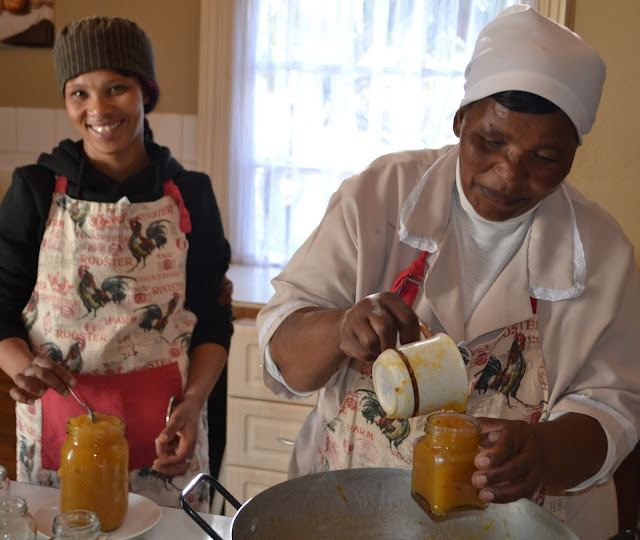I'm never sure where the Heart of a Karoo Homestead is....... the farmyard, the crucial windmill, the blazing fireplace in winter, or the Farmhouse Kitchen.
I guess more often than not its The Kitchen -
don't we all love the sight and warmth of an old farm AGA Stove?
The main attraction of the farm kitchen has to be the incredible women that embrace skills handed down to them over generations.
I've never seen Martha use a cookbook, and can't believe the delicacies she produces.
Of course the moment cartons of fruit arrive at BloemhofKaroo, there is an extra flurry of excitement and urgency - everything must take second place to the overly important task of making a Jam, Preserve or Chutney.
Apple Chutney Recipe
Peel, core and cube apples.
For every 500g Apples, add the following into a large pot, cover with water, and boil/simmer:
4 cups sugar, 1 tsp salt
6 onions
 100g soaked dried apricots
100g soaked dried apricotshandful chopped raisins
2 red peppers
handful whole coriander
chilli flakes
few pinches nutmeg & ginger
4 cloves garlic
4 Tbsp White Wine Vinegar.
Boil until all ingredients are soft, and water has cooked away completely.
 Use a soup "plunger", partially liquidise the apple mixture, keeping some of the chunkiness.
Use a soup "plunger", partially liquidise the apple mixture, keeping some of the chunkiness.Sterilise bottles, and bottle chutney while hot.
Martha's Apple Blatjang is truly a winner.
Love this quotation:
"A Little Kitchen makes a Large House".
BloemhofKarooKitchen is "ons hart se punt".

























